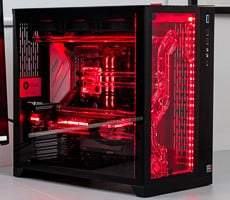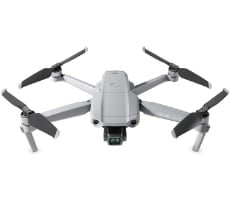Nintendo Switch Review: Buying Advice And Tips For Maximum Fun
We'll get to my own thoughts in a little bit, but first let's talk about the Switch's reception. Despite the skepticism by myself and many others leading up to the Switch's launch, gamers have been tripping over themselves in a mad dash to get their hands on one. As Nintendo is prone to do lately (hello NES Classic Edition), it is not producing enough consoles to meet demand, frustrating consumer in the process. Whether there is any truth to the conspiracy theories claiming this is intentional on Nintendo's part does not really matter. Supply constraints aside, Nintendo sold more Switch consoles during its first two days of availability than any other game system in the company's history, including the Wii. And with a full month of sales under its belt, NPD Group estimates more than 906,000 Switch sales in the U.S., making it Nintendo's fastest selling console ever.
Simply put, the Switch is breaking records and it is doing it with limited hardware. By that I mean Nintendo is not engaging Sony or Microsoft in a specs war—both the PlayStation 4 and Xbox One are more powerful systems than the Switch, let alone the upgraded PlayStation 4 Pro and Xbox One S. Instead, Nintendo hedged its bets on a hybrid design and so far it is paying off in a big way.
Can the Switch maintain this kind of momentum? And is the Switch deserving of the hype? The short answer to the first question is "Maybe," and "Somewhat" to the second. I'll expand on both thoughts in the following pages as well as offer up some tips on how to optimize the gaming experience on the Switch. Before I do any of that, however, I want to talk about the hardware and design of this unique console.
|
| Launch Date (U.S.) | March 3, 2017 |
| Models / Colors |
Nintendo Switch with Gray Joy-Con / Nintendo Switch with Neon Blue and Neon Red Joy-Con |
| CPU/GPU | NVIDIA Tegra X1 SoC |
| Memory | 4GB LPDDR4 |
| Display |
6.2-inch LCD (1280x720) multi-touch capacitive touchscreen |
| Storage | 32GB internal expandable via microSD |
| Networking | 802.11ac and Bluetooth 4.1, optional wired LAN adapter available |
| Video Output |
Up to 1080p via HDMI in TV mode, up to 720p via built-in screen in tabletop mode and handheld mode |
| Audio Output |
Compatible with 5.1-channel Linear PCM output, output via HDMI connector in TV mode |
| Speakers | Stereo |
| Buttons | Power button, volume button |
| Headphone / Mic Jack |
3.5mm audio jack |
| Game Card Slot |
Nintendo Switch game cards |
| MicroSD Card Slot |
Compatible with microSD/microSDHC/microSDXC memory cards *Once the microSDXC card is inserted, a system update will be necessary. An Internet connection is required to perform this system update. |
| Sensor | Accelerometer, gyroscope, and brightness sensor |
| Operating Environment | 41-95 degrees F / 20-80% humidity |
| Internal Battery |
Lithium-ion battery / 4310mAh (non-removable) |
| Battery Life |
Approximately 2.5 to 6.5 hours |
| Charging Time |
Appromixately 3 hours |
| Size (Switch Console) |
Approximately 4 x 9.4 x 0.55 inches (HxWxD) with Joy-Con attached |
| Weight | Approximately .66 pounds (.88 pounds with Joy-Con controllers attached) |
| Warranty |
1-year |
| Subscription Services | Paid service launching in fall 2017 |
| Price | $299.99 (MSRP) |
Initially there was some speculation that NVIDIA had built a custom SoC for the Switch. That is because Nintendo and NVIDIA were both vague about what exactly was powering this thing. As it turns out, the Switch is powered by a standard Tegra X1 SoC, the same slice of silicon that resides in NVIDIA's current generation Shield TV set-top box.
The Switch might be a victim of timing here. Had Nintendo planned to release the Switch later this year, perhaps NVIDIA might have been able to build a custom Tegra chip based on its newer Pascal architecture. But as it stands, the Tegra X1 is born out of NVIDIA's previous generation Maxwell architecture.
But again, Nintendo isn't out to win a specs war. While perhaps a bit dated, the Tegra X1 is a capable SoC for mobile game play, and for games like Zelda, it can handle 1080p gaming on the big screen, albeit with some drawbacks. Going with a Tegra chip of any type does suggest that Nintendo is prioritizing mobile game play.
Let's have a closer look at the hardware.








